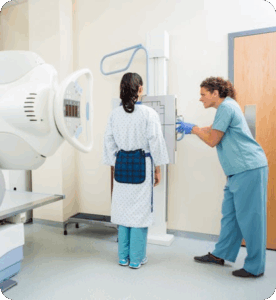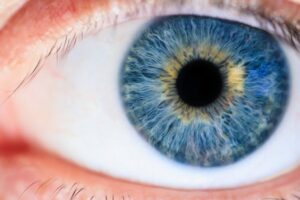Big Spring, Texas / Syndication Cloud / September 16, 2025 / Wordsmith World

Key Summary
- Lifestyle modifications like sleep hygiene and stress management can reduce hot flash frequency by up to 50%
- Dietary changes, including avoiding triggers and adding cooling foods, provide immediate and long-term benefits.
- Herbal remedies such as black cohosh and red clover offer hormone-free alternatives with clinical backing.
- Mind-body techniques like deep breathing and meditation help manage symptoms as they occur.
- Professional guidance ensures you choose the most effective natural methods for your specific situation.
Nearly 75% of women experience hot flashes during menopause. That sudden rush of heat can strike anywhere – you might find yourself drenched in sweat during an important meeting or waking up multiple times each night with soaked sheets. But the good news is that you have more control than you think.
The Hidden Challenge Most Women Face
Many women assume hormone replacement therapy is their only option for serious relief, which unfortunately creates a dilemma – you want symptom relief but worry about potential risks or side effects associated with hormonal treatments.
What most people don’t realize is that natural methods can be just as effective for many women, however, the key lies in understanding which approaches work best and how to implement them properly.
“Menopause can be difficult, and that’s why you want to enter this season of life with confidence and a sense of adventure,” explains Betty Johansen, author of Dancing Through Menopause. “Don’t just expect pain and problems. Anticipate solutions.”
Natural Methods That Actually Work
Master Your Environment and Timing
Keep Your Space Cool: Your surroundings play a bigger role than you might expect, so set your thermostat between 65-68°F during the day and use fans strategically to create cross-ventilation. At night, consider a cooling mattress pad or lightweight, moisture-wicking sleepwear.
Track Your Triggers: Hot flashes don’t happen randomly. Common triggers include spicy foods, caffeine after 2 PM, alcohol, stress, and tight clothing. Keep a simple diary for two weeks, noting when flashes occur and what you consumed or experienced beforehand.
Transform Your Diet for Cooling Relief
Add Phytoestrogen-Rich Foods: Soybeans, flaxseeds, and chickpeas contain natural plant compounds that mimic estrogen’s cooling effects. Include these foods daily rather than taking supplements, as whole foods provide better absorption and additional nutrients.
Eliminate Heat-Inducing Culprits: Spicy foods, hot beverages, and large meals can trigger flashes within 30 minutes of consumption, but this doesn’t mean giving up your morning coffee forever. Try iced versions of your favorite drinks and eat smaller, more frequent meals instead of three large ones.
Harness the Power of Herbal Medicine
Black Cohosh for Intensity Reduction: Clinical studies show black cohosh can reduce hot flash intensity by 26% within eight weeks. Take 20mg twice daily with food to minimize stomach upset.
Red Clover for Frequency Control: Red clover isoflavones work differently than black cohosh, focusing on reducing how often flashes occur rather than their intensity. Most women see results after 12 weeks of consistent use at 40-80mg daily.
Practice Immediate Response Techniques
The 4-7-8 Breathing Method: When you feel a flash starting, inhale for 4 counts, hold for 7, then exhale for 8. This activates your parasympathetic nervous system, which helps regulate body temperature. It’s best to practice this technique when you’re not having a flash, so it becomes automatic.
Cold Water Reset: Keep a spray bottle filled with cold water nearby and mist your wrists and neck when you feel heat building so these pulse points cool your entire circulatory system quickly. Some women also find that splashing cold water on their face provides instant relief.
Build Long-Term Resilience Through Movement
Regular Exercise Reduces Frequency: Moderate exercise for 30 minutes, five days per week, can cut hot flash frequency in half. Walking, swimming, or Pilates work well, as does avoiding intense workouts within three hours of bedtime, as they can trigger nighttime flashes.
Strength Training for Hormonal Balance: Weight-bearing exercises help maintain bone density while supporting your body’s natural hormone production. Focus on compound movements like squats and deadlifts twice per week. Even bodyweight exercises provide significant benefits.
When Natural Methods Need Professional Guidance
While these natural approaches work for many women, the most effective strategy often involves personalized guidance from healthcare providers who specialize in hormone-free menopause management. Functional medicine practitioners and naturopathic doctors can help you identify which combination of methods will work best for your specific symptoms and health history.
They can also monitor your progress and adjust your approach based on how your body responds. Some women need higher doses of certain herbs, while others benefit from specific nutrient combinations that aren’t available in standard supplements.
Your Next Steps for Cooler Days Ahead
Start with one or two methods that feel most doable for your current lifestyle. Track your symptoms for at least four weeks before adding new approaches, and remember that natural methods often take longer to show results than pharmaceutical options, but they tend to provide more sustainable relief without unwanted side effects. The goal isn’t perfection, even a 30% reduction in hot flash frequency or intensity can dramatically improve your quality of life and sleep.
Frequently Asked Questions
How long do natural methods take to show results?
Most dietary and lifestyle changes show initial effects within 2-4 weeks, while herbal remedies typically require 6-12 weeks for full benefits. Breathing techniques and environmental modifications can provide immediate relief during active hot flashes.
Can I use multiple natural methods at the same time?
Yes, combining methods often provides better results than using single approaches. Start with lifestyle changes, then add herbal remedies gradually and always inform your healthcare provider about any herbs or supplements you’re taking to avoid interactions.
Are there any natural methods I should avoid?
Avoid unregulated supplements, extremely restrictive diets, or any method that promises immediate dramatic results. Some herbs can interact with medications or aren’t safe for women with certain health conditions, like blood-clotting disorders or hormone-sensitive cancers.
What should I do if natural methods aren’t providing enough relief?
If natural approaches don’t reduce your symptoms by at least 30% after three months of consistent use, consider learning more about your specific situation and learning more about menopause and how you can start to see it as a positive.
Wordsmith World
Texas
Big Spring
Texas
79720
United States







































